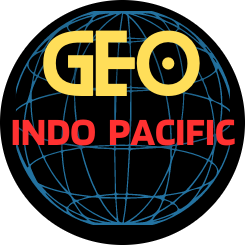
Facing the “most severe and complex security environment” in 80 years — sparked largely by China’s military buildup and aggression — Japan is bolstering its air and missile defenses, expanding its uncrewed systems and strengthening its mobile deployment capabilities, while deepening critical collaboration with Allies and Partners.
“The Alliance with the United States is a key pillar of our national security policy and the cornerstone of peace and stability in the Indo-Pacific region,” Defense Minister Gen Nakatani noted in the recently unveiled “Defense of Japan 2025” white paper.
Tokyo approved a record $55 billion defense budget for 2025, the third year of a five-year expansion under a national security strategy that calls for defense spending to reach 2% of gross domestic product by 2027. The current allocation prioritizes acquisition of long-range missiles, including U.S.-made Tomahawks, and development of a defense communications satellite, among other capabilities.
In March 2025, the Japan Self-Defense Forces (JSDF) launched its Joint Operations Command (JJOC) to streamline and centralize command and control of all JSDF branches from peacetime to emergency. Concurrently, U.S. Forces Japan, which oversees about 60,000 Airmen, Guardians, Marines, Sailors and Soldiers, is transitioning to a Joint Force Headquarters to optimize operational coordination with the JJOC. U.S. Navy Adm. Samuel J. Paparo, Commander of U.S. Indo-Pacific Command, called the move “one of the strongest improvements to the alliance’s military cooperation” in 70 years.
Japan’s defense white paper, released in mid-July, notes that the “international community is facing its greatest trial since World War II and entering a new era of crisis.”
“States that do not share universal values or political and economic systems based on such values are expanding their influence. Unilateral changes to the status quo by force and such attempts represent a serious challenge to the existing international order.”
The white paper highlights looming threats, including:
- China’s decades-long military expansion lacks transparency and Beijing is intensifying its maneuvers around Japan, including in the East China Sea and the Western Pacific. Chinese military and Coast Guard aircraft and vessels have intruded into Japan’s territorial airspace and waters. China also conducts destabilizing activities in the South China Sea and around self-governed Taiwan, which Beijing claims as its territory and threatens to annex. These moves “present an unprecedented and the greatest strategic challenge which Japan should respond [to] with its comprehensive national power and in cooperation and collaboration with its ally, like-minded countries, and others.”
- North Korea’s military activities, including its illegal nuclear and ballistic missile programs, pose “an even more grave and imminent threat to Japan’s security than ever before.” Pyongyang has launched hypersonic missiles, which travel at five times the speed of sound and are difficult to track and intercept, and the regime is seeking to deploy long-range cruise missiles capable of carrying nuclear warheads.
- Russia continues deploying coastal missiles and fighter jets, building military installations and conducting large-scale exercises near Japan. Moscow also is increasing military cooperation with Beijing, including joint bomber flights and naval maneuvers. Japan Air Self-Defense Force aircraft scrambled 704 times in fiscal year 2024, including 464 times for Chinese aircraft and 237 times for Russian aircraft. “These repeated joint activities are clearly intended for demonstration of force against Japan and are a grave concern from the perspective of the national security of Japan.”
In response, Tokyo is “fundamentally reinforcing its defense capabilities,” the white paper noted. Those initiatives include stealth guided-missile destroyers, long-range uncrewed surveillance aircraft, a next-generation fighter aircraft being developed with Italy and the United Kingdom, and a Glide Phase Interceptor being developed with the U.S. to counter hypersonic weapons.
Japan will maintain its peace and security based on its alliance with “the world’s dominant military power, the U.S.,” the white paper stated, “with which it shares basic values such as democracy, respect for human rights, the rule of law … as well as interest in maintaining the peace and security of the world.”





